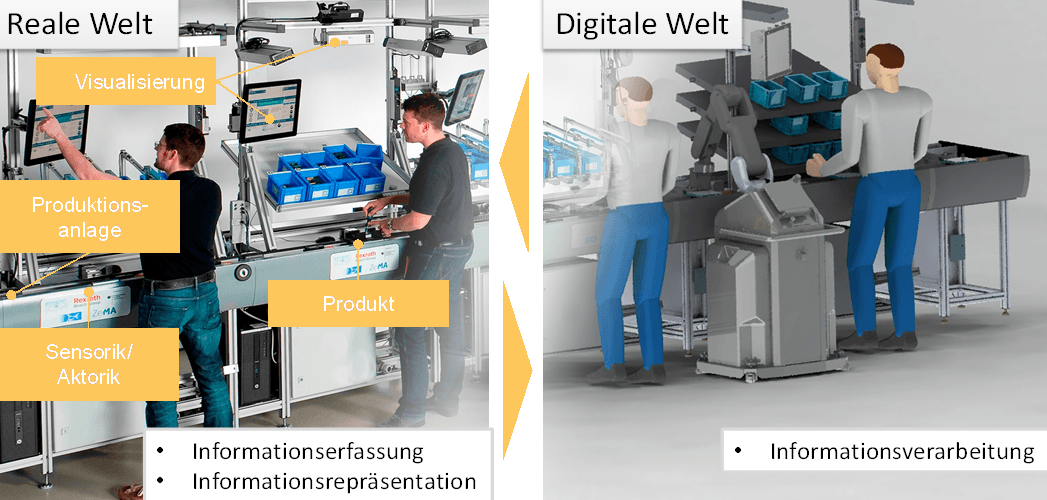Digital twin
Digital representation of a real system
A digital twin represents a real object in the digital world. These may be tangible or intangible objects. The digital twins are made up of data and algorithms and can be linked to the real world via sensors. Digital twins form the basis for Industry 4.0 processes.
The current status
Due to the rapidly advancing development of digital twins, an increasing trend in industrial distribution can be seen since 2017. Large companies in particular have already introduced digital twins or are planning to implement them in their companies. A growth trend is also emerging for small and medium-sized companies.
Current challenges in the implementation of digital twins can be found on both the purely technical and socio-technical side. Concurrent development topics, such as artificial intelligence, IT security or model-based systems engineering, on which the success of the digital twin is based, have not yet been completed and are anchored in all companies.
Technology and use
Technology description
Elements of a digital twin

Possible application scenarios
The comprehensive representation of complex systems in all areas of the product life cycle requires a distinction between digital twins in „product twin“, „production twin“ and „service twin“. The mapping of real objects on the basis of collected data enables a comprehensive range of applications.
One field of application is continuous product adaptation and further development through the use of real data. In addition, digital twins are already being used in the service sector. Recorded data is used to realistically describe the actual state of the system. Using simulation models or prediction algorithms, maintenance work can be carried out predictively instead of preventively as was previously the case.
Step-by-step introduction
Step 1: Design and manufacturing phase
Several questions need to be clarified with regard to the objective:
-Which digital twin should be implemented (product, production, service twin)?
-What task should it perform (visualization platform, simulation model, etc.)?
-What data is relevant for this?
Step 2: Operational phase
This means that the digital twin can be continuously „fed“ with relevant data and made usable.
Step 3: Expansion phase
Opportunities for SMEs
Contact us
Keep an eye on the most important SME-relevant technologies with our technology radar!
